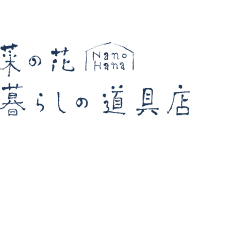Facts About Brakes!
“I couldn’t fix your brakes, so I made your horn louder,” once joked comedian Steven Wright about a bumbling mechanic’s report to a customer. While funny in a stand-up routine, faulty brake repair is no laughing matter. Car owners need to be knowledgeable of the following components of the braking system and their need for regular brake service.
Braking systems can be divided into these three main parts–hydraulic reservoir and lines, mounting structure and activating pistons, and braking surface.
1. The Braking Surface
The braking surface itself is made up of two parts–the brake shoes or pads and the brake hub or disc. The brake shoes or discs are what is normally thought of when the term “brakes” is used. These are the movable parts that have a heat resistant friction pad mounted on them which are pressed against the wheel’s rotor disc or drum that is rotating as the car moves. When a driver steps on the brake pedal, the hydraulic system transfers that pressure to the shoes or discs which press against the rotor discs or drum and slows the rotation of the tire until the car stops. The friction created against the pad slowly wears
it down. Thus, the brake shoe/pad is the main part of the braking system that needs regular service. Depending on a person’s driving habits and the quality of the brake pad/shoe, the car owner should expect to replace them every few years.
2. The Hydraulic Reservoir
The heart of the braking system is super mario run hacks the master cylinder, a hydraulic reservoir filled with brake fluid mounted on the car’s firewall directly in front of the driver’s seat. When the driver presses on the brake pedal, a plunger compresses the brake fluid in the cylinder which transfers the pressure to all four brakes evenly. The clear plastic reservoir is mounted on top of the actual hydraulic cylinder and it has a rubber air tight cap which can be removed to add brake fluid. Part of regular brake service should be examination of the fluid level to make sure the reservoir is full. If it is not, then ask your brake repair specialist to find where the brake fluid is leaking out, since the hydraulic system is sealed and does not typically require additional fluid. The possible places to check for leaks is the master cylinder itself, which may have a seal failing allowing fluid to leak out before it enters the brake lines, the brake lines leading from the master cylinder to the individual brakes at each wheel, or the hydraulic wheel cylinders which press the brake pads/shoes
against the rotating surfaces of the drum or rotor.
3. The Wheel Cylinders And Caliper Pistons
Each individual brake is pressed against the rotating rotor or drum by the pressure of a wheel cylinder or caliper with a hydraulic piston. These need to be examined when replacing brake pads/shoes as they may malfunction or develop leaks. For systems that employ wheel cylinders, rebuild kits that include new boots, internal springs and plungers yu gi oh duel links cheats can be used to refurbish them. Brakes with the disc pads operated by calipers can sometimes develop problems when a caliper piston becomes frozen in place due to grit and dirt. Then the pressure applied to the rotor is one-sided and results in uneven wear on the brake discs. Owners should insure both pistons operate freely when the brake pedal is depressed.
“An ounce of prevention is worth a pound of cure,” advised Benjamin Franklin. This old adage certainly is true when it comes to a car’s braking system. With care and preventative brake service, car owners can avoid more costly auto and brake repair.
If you have concerns about brake repair issues, contact our ASE Certified technicians at Heights Car Care today for more information about brake service and to schedule an appointment. share this site Our auto repair shop proudly serves residents in the community of Heights, Billings, MT, and the surrounding area.


コメントを残す